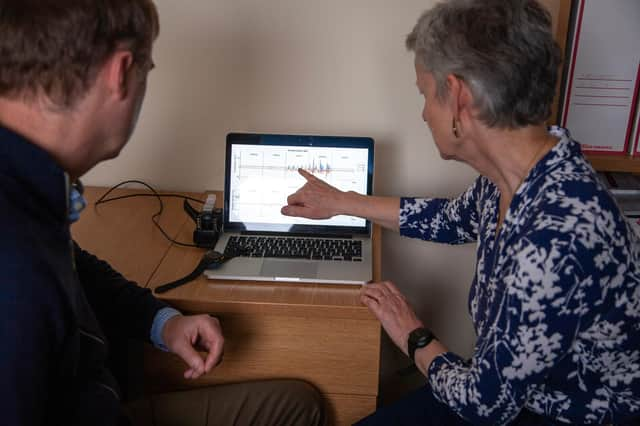Endometriosis: How wearable technology could improve limited treatment options for this painful condition – Professor Philippa Saunders and Professor Andrew Horne


Through research at Edinburgh University and others worldwide, our team has highlighted the urgent need to develop personalised, targeted approaches for effective long-term management of endometriosis, which are acceptable and accessible to patients and their healthcare team.
Endometriosis is a condition where tissue similar to the lining of the uterus forms outside of the uterus, most commonly in the pelvis.
Advertisement
Hide AdAdvertisement
Hide AdPeople with endometriosis frequently struggle to describe the types of pain symptoms they experience because their symptoms vary in severity and can be very unpredictable.
As a result, we currently lack a detailed understanding of how individuals’ pain manifests and whether it is constant or variable, or associated with specific activities like passing urine or during intercourse.
This gap in knowledge means that, despite one in ten women suffering from endometriosis, current treatment options are sub-optimal and limited.
They rely on either surgical removal of endometriosis lesions – with high recurrence rates – or drugs that often have undesirable side effects, such as hot flushes. Other than these, many patients explore lifestyle changes, like dietary modifications and exercise, as a way of controlling their symptoms but there is currently no robust research evidence to inform these choices.
We believe that using ‘smart’ technologies could create a better understanding of this healthcare challenge. By combining a wearable, clinical-grade biosensor with a mobile phone app where patients can provide information about their symptoms, we could gather objective and detailed data to monitor and assess patients’ physical activity, sleep and everyday living behaviours.
To use these wearables to create an evidence base which complements verbal reports from patients, we have partnered with data scientists who have experience using smartwatches to carry out real-time monitoring of patients with a variety of clinical conditions.
In a new study just granted funding, we will work together and closely with patients to objectively assess endometriosis pain using this novel technology.
This approach to developing an endometriosis healthcare response is situated within a growing trend to draw on artificial intelligence and machine learning in clinical settings.
Advertisement
Hide AdAdvertisement
Hide AdIf our findings show that using wearable technology provides a solution to the barrier of limited understanding, it would not only be an important development in endometriosis research but another example of why thinking innovatively is imperative to wider medical development.
Philippa Saunders is a fellow of the Royal Society of Edinburgh and Academy of Medical Sciences, and professor of reproductive steroids at the Centre for Inflammation Research at Edinburgh University. Andrew Horne is professor of gynaecology at the MRC Centre for Reproductive Health at Edinburgh University and fellow of the RSE.
Philippa and Andrew are the founders and co-directors of the Exppect Centre for Pelvic Pain and Endometriosis at the University of Edinburgh. The RSE is Scotland's national academy, bringing great minds together to contribute to the social, cultural and economic well-being of Scotland.
A message from the Editor:
Thank you for reading this article. We're more reliant on your support than ever as the shift in consumer habits brought about by coronavirus impacts our advertisers.
If you haven't already, please consider supporting our trusted, fact-checked journalism by taking out a digital subscription.
Comments
Want to join the conversation? Please or to comment on this article.
